Types of electrical sockets and switches: what they are and how to choose correctly
A wide range of electrical accessories is due to the multi-functionality of sockets and switches.Various conditions of their use dictate their requirements regarding the functional parameters and appearance of the products.
Agree, deciding on the right model is quite difficult. In order not to make a mistake with your purchase, you need to take into account many parameters: the type of electrical network, installation method and operating conditions of the electrical accessories.
We will help you resolve the issue. In the article, we described various types of electrical sockets and switches and provided practical advice on choosing products. A video review of modern electrical products will help you decide on a purchase.
The information will be useful to both experienced electricians and home craftsmen updating the household electrical network.
The content of the article:
Types of modern electrical networks
Before starting the review, it is necessary to clearly understand that an outlet is just the end point of a rather complex mechanism for “transporting” energy from a power plant to an industrial or household electrical appliance.
On the other hand, a switch is a simple key to break an electrical circuit. What they have in common is that both of these devices interact with the same type of electrical network.
Classification by voltage level
In order not to go into the “wilds” of electrical engineering, it should be noted that often in Eastern European countries ordinary appliances can consume electricity at a variety of voltage levels:
- 220V, 50Hz;
- 380V, 50Hz;
- 120V, 60Hz.
The first category of the electrical network “produces” a voltage of 220 V (single phase) in apartment sockets.
This is enough to operate modern domestic and foreign household appliances: from kettles and curling irons to refrigerators and washing machines.
The second category of the electrical network provides voltages at 380 V (three phases) for industrial and agricultural appliances: from crushers and compressors to factory machines and electric generators.
The third category of electrical network is a little more complicated: we don’t have it, but we do have electrical appliances. For example, after ordering from Amazon.com or another foreign Internet resource, a trimmer (“cool” hair clipper) arrives in the mail.
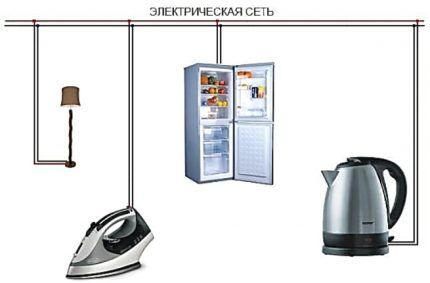
The user understands that the trimmer, which is designed for a 110 V network and a type A plug connector, cannot be charged using our 220 V and a type F socket. The device, dear to the heart and wallet, will instantly fail.
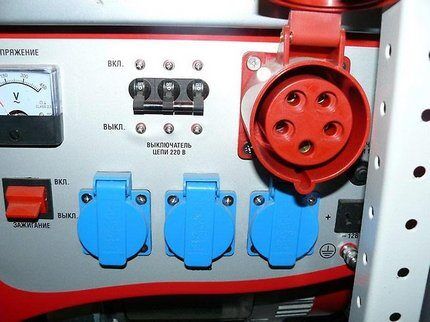
Therefore, most people prefer adapters, but there is the option of installing a socket for the above type of plug with a preliminary reduction in voltage on the electrical panel. To do this, you can use a special socket for type A connector.
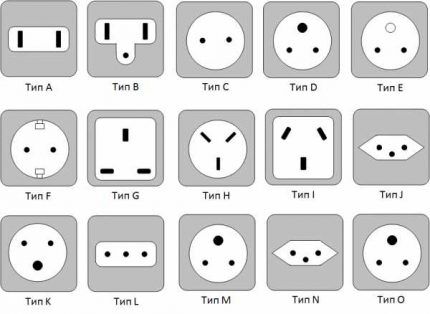
Types of wires and permissible loads
Another important point that you need to pay attention to when choosing electrical switches and sockets is quality of electrical wiring. Wires come in different types: cheap and high-quality.
When cutting out a two-core aluminum wire from a reinforced concrete wall, every electrician and firefighter remembers the person who proposed making electrical wiring in Khrushchev-era buildings and sockets from aluminum cables.
Power electrical wiring cable must be safe, high quality, non-flammable and, at a minimum, copper. It is necessary to look towards such abbreviations as PRTO, VVGng and NYM.
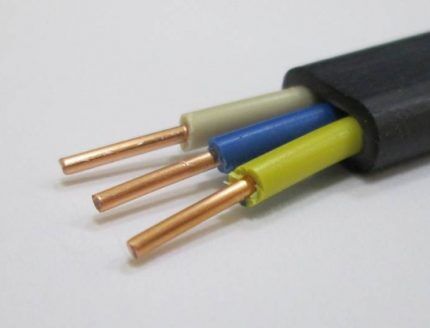
In addition, you should understand the type and power of the load connected to the outlet. Let's remember school physics: the load of the electrical network means every device and device that is connected to this network.
There are two main classes of loads:
- reactive;
- active.
Active loads. These are considered electrical devices that consume energy and transform it into heat: light bulbs, tiles, convectors, irons, etc.
Reactive Loads. This group includes any electrical device that is equipped, for example, with an electric motor or other mechanism for converting electricity into motion mechanics.
Such devices have a high switching current, which can cause thermal processes in the wiring, the outlet itself and their connections.This can affect the process of ignition of insulation in various parts of the circuit: directly in the wire, at their connection, or at the point where the device is connected to the network.
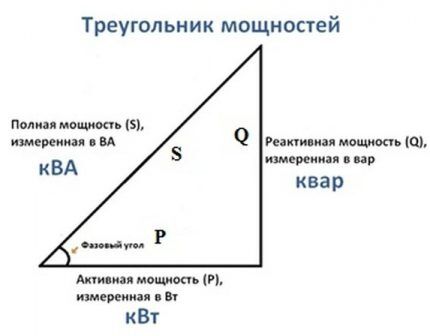
Sockets and switches must be selected in such a way as to ensure safety in the apartment, office and home, even when connecting almost all electrical appliances that are available. Therefore, it is imperative to select only high-quality products with a maximum service life.
Use of switches with sockets
One of the main places of human “habitation” is our home - the home where the average person spends most of his life, not counting time for work, business trips and vacations away from his favorite sofa.
Therefore, the presence of power supply in a house, apartment, or room greatly helps us to live fully in the current conditions of a developed technological society.
Not a single modern room can be imagined without some kind of switch, socket, lighting outlet, etc. These elements are a key component of the power supply system of anything - they provide safe access to the electrical network.
The general operating scheme is clear to almost everyone, but everything lies in the details. The primary problem in choosing electrical accessories is determining the purpose and technical features of operation of the finished product.
All of them must have a so-called safety margin and fit harmoniously into the most daring interior design solutions of the room.
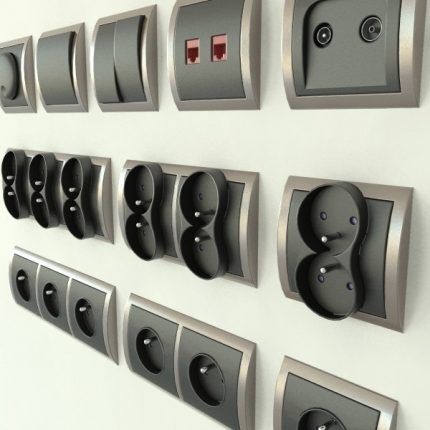
Regardless of the color palette, when studying a variety of electrically conductive products, the first thing you need to decide is the purpose of the room and, depending on this, makes a selective selection of products.
There are several general categories of electrical fittings for a specific type of building:
- hangar-type factory premises;
- non-residential and commercial buildings;
- offices and auditoriums;
- apartment and private houses.
Some switch modifications and types of sockets can be used in different buildings. These are high-quality products that comply with state product quality standards and ISO certificates.
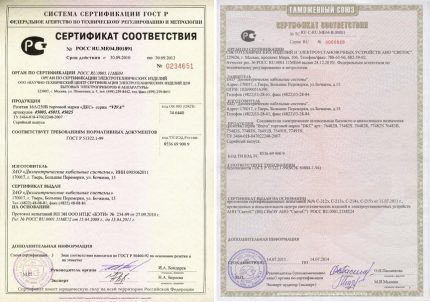
If such products ensure the safety and security of your home, then you definitely shouldn’t skimp on them. It is necessary to purchase high-quality electrical products for at least $3 per unit.
Sockets, switches, adapters, and adapters from manufacturers such as: Legrand, ABB, Bticino, Merten, Schneider Electric, Berker, Gira, Jung etc.
Variety of electrical outlets
To select and install the socket correctly, you need to know what devices are available for sale. You should be aware of all technical features and requirements for these products.
Electrical accessories classification parameters
The gradation of electrical appliances is based on the following characteristics:
- Rated voltage. Typically, household sockets are designed for 220-240 V AC voltage with a frequency of 50 Hz.
- Type of plug connector. The type of plug used in post-Soviet countries is C or F.
- Number of seats. Depending on the number of sockets in the block: single, double and modular. And also combined with various types of interfaces (USB, HDMI, RJ-45, RJ-11). The blocks are a strip of 4 or more holes for sockets.
- Rosette overlay color palette. Here you can choose any color and shade that you like. Very often, overlays are matched to a color other than the main color of the wallpaper, or a half/quarter tone from the main color of the room, if it is an office.
- Mounting principle. According to the method of installation on the wall, there are hidden and overhead sockets. Overhead sockets are attached to the surface of the wall (very rarely the floor); mounting sockets are pre-made for hidden sockets.
These nests can be cut out/cut with anything: a jackhammer, a chisel, a bolt. But the standard solution to the problem is a hammer drill with a special bit for grooving.
There are also models with special technical features. For example, sockets with grounding, lid, curtains, lighting, etc.
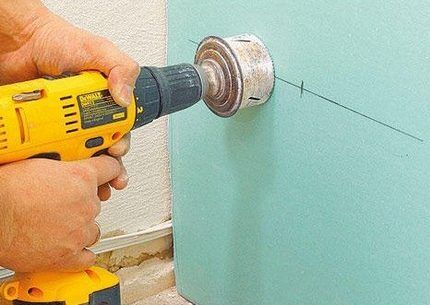
Selection of sockets: taking into account the purpose of the premises
Concluding the review of types of sockets, it should be noted that in recent years, ready-made solutions have been empirically developed for a wide variety of premises: residential and non-residential.
Master electricians install sockets in plants and factories, but almost every self-respecting owner can boast of installing and connecting sockets in residential buildings and apartments.
And so, here are a few ready-made considerations for equipping a room with sockets. You can install standard sockets in the living space of the apartment, but you must install an socket block with 4-6 connectors on one of the walls.
We recommend installing in the bathroom and toilet waterproof sockets with protective covers that have a moisture protection class of IP44.
In children's rooms or apartments where there are small children, you can connect sockets with internal curtains so that the child cannot put any objects into it. Then these sockets can be easily replaced with standard ones by changing the cover.
A peculiarity of private houses is that modern electrical appliances (lawn mowers, saws, machines and other gardening tools) are increasingly used to care for the garden area.
To supply power to equipment of this type, an external external outlet is required. This may be a socket with a cover, grounding and ejector.
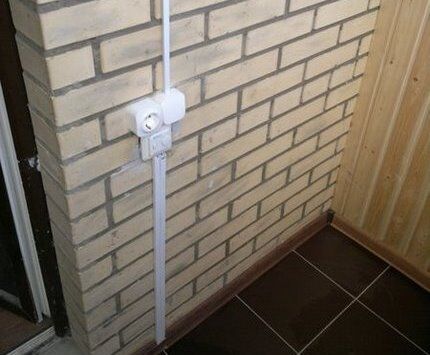
It is worth noting that for offices of government agencies and public organizations it is better to use socket structures. They save space and provide a large number of electrical connectors for computer and office equipment.

In addition to the office option, designs are often suitable for modern kitchens. Such modules can include a sufficient number of kitchen assistants: blenders, meat grinders, juicers, coffee makers, food processors, dryers, sinks, stoves, etc.
Types of Electrical Switches
As noted earlier, an electrical switch is nothing more than an electrical circuit breaker. This is a very simple mechanism. However, every master electrician needs to understand its technical features and operating principle.
Knowing them, you can be sure that the device will operate safely in normal mode for a long time.
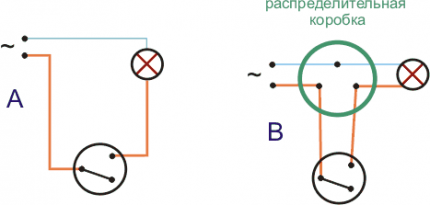
Classification of light switches
Considering the current pace of development of electrical engineering, today's engineers, specialists and construction repairmen identify a significant number of types of electrical switches.
The variety of proposals can be divided into several groups.
It is enough to decide on the following list of answers to the following questions:
- mains voltage — Eastern Europe is characterized by 220V/380V;
- degree of dust and moisture protection — dust IP20, moisture protection IP44, IP54, IP64;
- installation method — hidden or external installation;
- switching method - screw, clip.
Additionally, switches are classified according to the type of off/on. Possible options: keyboard, push-button, rotary, rope, touch, wireless switches, with motion sensor, dimmers, etc.
The latter are worth talking about separately, since these mechanisms “transfer” the electrical network from one circuit to another.As a result, it is possible, for example, in an office to have several separate lighting systems on one multi-key switch: full lighting, partial, duty, etc.
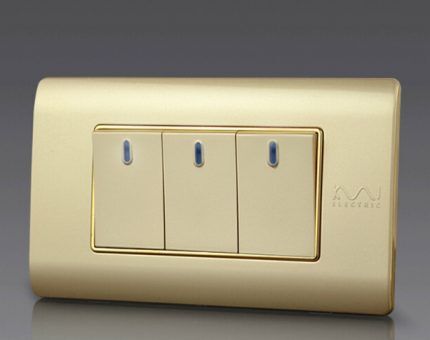
Probably everyone can handle the choice of color palette for the switch cover. Overlays with a matte surface in soft pastel colors look very elegant and stylish.
Selecting switches for home and office
Let's move on to specifics, especially regarding the selection of everyday goods for the home and office and retail premises.
Switches and switches for industrial and non-residential premises require special selection, which should be done exclusively by an electrical specialist.
Modern offices often have multiple lighting circuits - a room or an entire floor of a building. In any case, modular blocks are installed in the office, which are responsible for switching lighting in two or more modes.
Living rooms, bathrooms, kitchens of apartments and utility rooms of a private house, everywhere you need lighting, and therefore switches. Thus, for general purpose living rooms it is recommended to install standard key-button switches. When choosing, take into account the interior of the room.
Kitchens and bathrooms must be equipped with certified devices with dust and moisture protection. Reliable and simple switches are installed in utility rooms (garage, boiler room, warehouse, basement).
In bedrooms and children's rooms, you can use switches for several lighting modes and/or backlit switches. In addition, an electric dimmer - a dimmer with a smooth decrease in illumination - would be a good option for children.
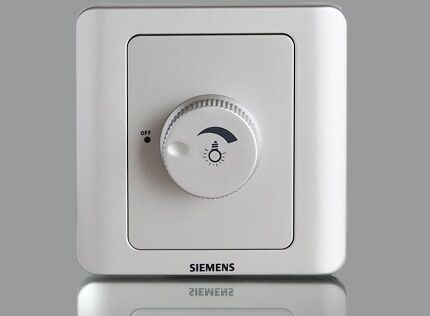
Recently, apartments have been equipped with complexes "smart House". An excellent addition to such lighting control and control systems will be touch-sensitive, wireless type switches, as well as modules with motion sensors.
Conclusions and useful video on the topic
Below are instructions for selecting electrical sockets and switches:
Review of popular models of sockets and switches:
Information about the types of switches and sockets will help you decide on the choice of the ideal electrical installation product that will uninterruptedly perform the work entrusted to it.
Do you have anything to add or have questions about choosing switches and sockets? You can leave comments on the publication. The contact form is located in the lower block.




When I moved into a rented apartment, I discovered that there were switches and sockets there from the time the house was built, from the 60s. I decided to replace and install more modern options. Several types were offered on the market. The first ones, frank China, didn’t even want to look: the contacts are bad, they hold weakly, something fell off already at the viewing stage. I opted for the old models, they turned out to be more reliable, but the new models are somehow flimsy, I don’t want to spend money.
I work in the theater administration. We had a problem for a long time - artists constantly forgot to turn off the lights in common areas, as a result of which the theater received large electricity bills. Our new electrician suggested replacing regular switches with motion sensors.Now the light comes on when someone enters the toilet and turns off after some time, after it is empty. It is very convenient and economical.